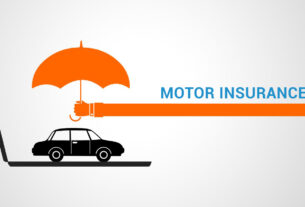Buying car insurance if often regarded as a confusing process by many. The primary reason for it being lack of awareness of the terminologies used in the policy documents. These terms, although standardised by the regulatory body, Insurance Regulatory and Development Authority of India (IRDAI), are puzzling for some. One such term that you might have come across is IDV. It is a common term used in all comprehensive coverages. This article lists down some facts about IDV that can help to understand your car insurance plan in detail.
#1 IDV equals to maximum sum insured of your insurance policy
Insured declared value or IDV is the maximum amount which the insurance company pays as compensation is the event you raise a claim. Depreciation on your car along with the manufacturer’s present value is what is considered to arrive at IDV. When you purchase a comprehensive insurance policy, the motor insurance company allows to set the IDV within a specified range. Thus, IDV is the approximate current valuation of your car.
#2 Car insurance premiums are impacted by IDV
The car insurance premiums have a direct relation to the IDV of your vehicle. Setting a higher IDV for your car will result in steeper premium whereas a lower IDV can reduce it. But take caution when you undermine the IDV for reducing the insurance premium since any accident resulting in a complete loss will pay-out a lower amount and result in a financial loss. Thus, the best way is to not consider premium or IDV in isolation but together when purchasing a car insurance policy. Make use of a car insurance premium calculator to estimate the impact of IDV on the premiums and accordingly set the IDV.
#3 The IDV is impacted due to depreciation
Depreciation is the reduction in value of your car over a period of time. This reduction in the value starts from the moment you take the delivery of the car. Insurance companies account for depreciation in arriving at the IDV for your car based on the following –
Insured Declared Value or IDV = (Manufacturer’s listed price or ex-showroom price – Depreciation) + (Cost of additional accessories not included in listed price – Depreciation on accessories)
You must remember that the insurance company does not account for the registration costs paid at the time of purchase when arriving at the amount of insured declared value. Even though IDV is impacted due to depreciation, buying an add-on zero depreciation cover will help you cover the replacement cost of components and repairs without any depreciation levied on it. Although this zero depreciation is an additional facility and thus will slightly increase the premium of your policy.
#4 There are standardised rates of depreciation prescribed by the General Insurance council
The rates of depreciation are standardised and do not differ for different vehicle. The table below mentions the amount which is considered as IDV –
| Age of the vehicle | IDV as a percentage of ex-showroom price |
| Not more than 6 months | 95% |
| More 6 months but not more than 1 year | 85% |
| More 1 year but not more than 2 years | 80% |
| More 2 years but not more than 3 years | 70% |
| More 3 years but not more than 4 years | 60% |
| More 4 years but not more than 5 years | 50% |
#5 The IDV is mutually decided for older cars
While the above table specifies the IDV only for vehicles up to 5 years, the insured declared value for older cars is based on mutual decision of the insurance company and you, the policyholder.
Periodic evaluation at each car insurance renewal is advised so that your car gets adequate coverage based on the accessories added.


